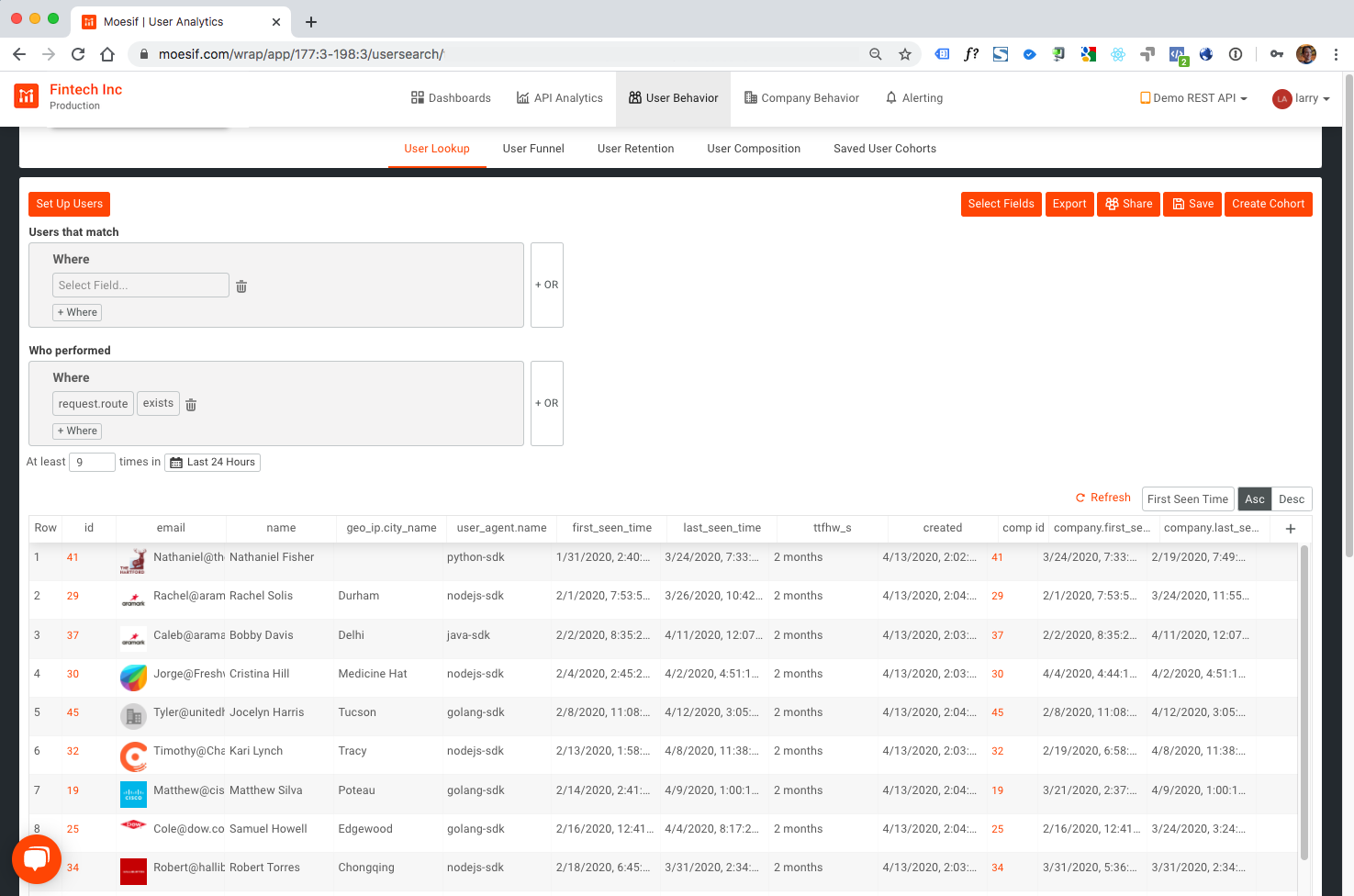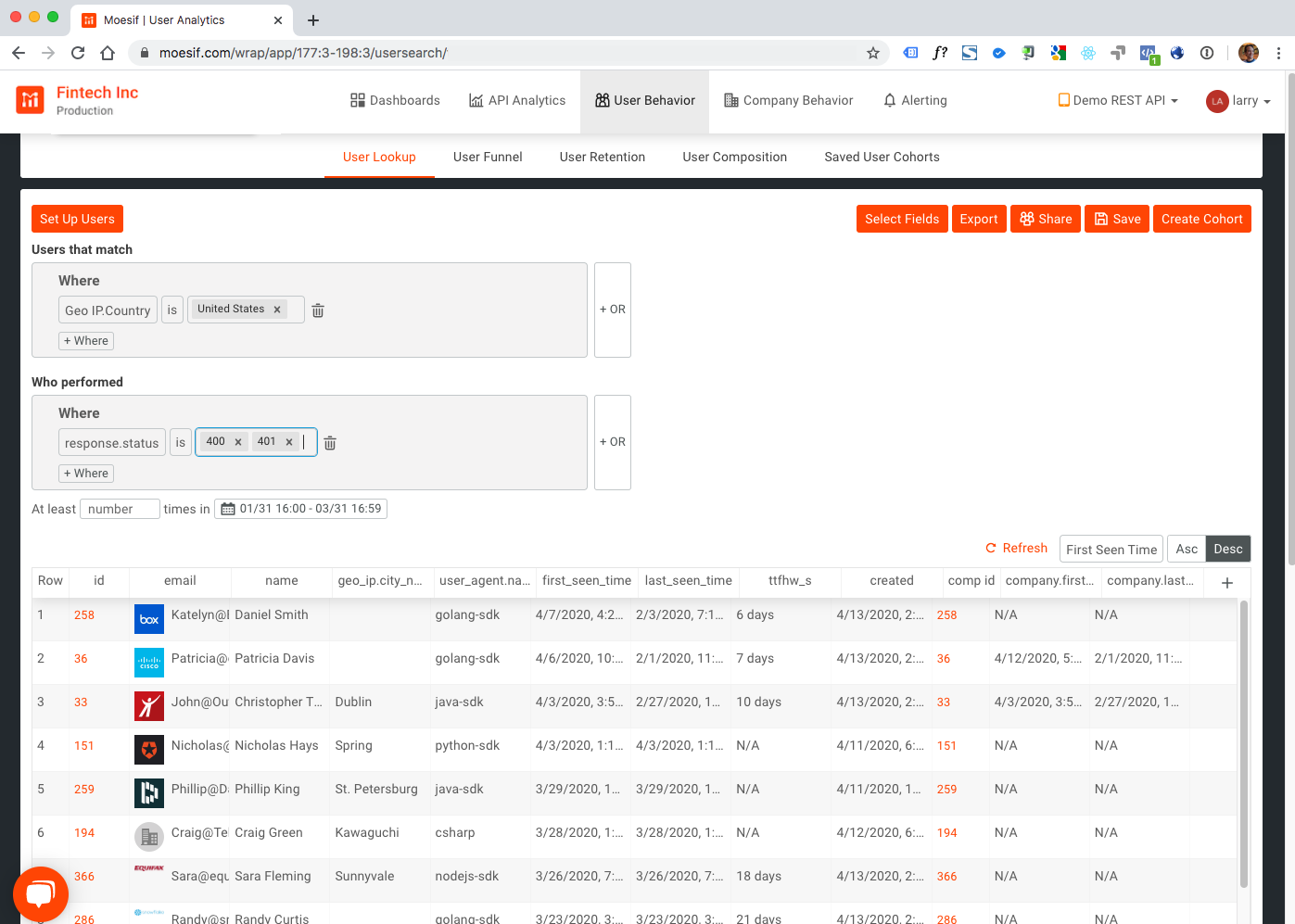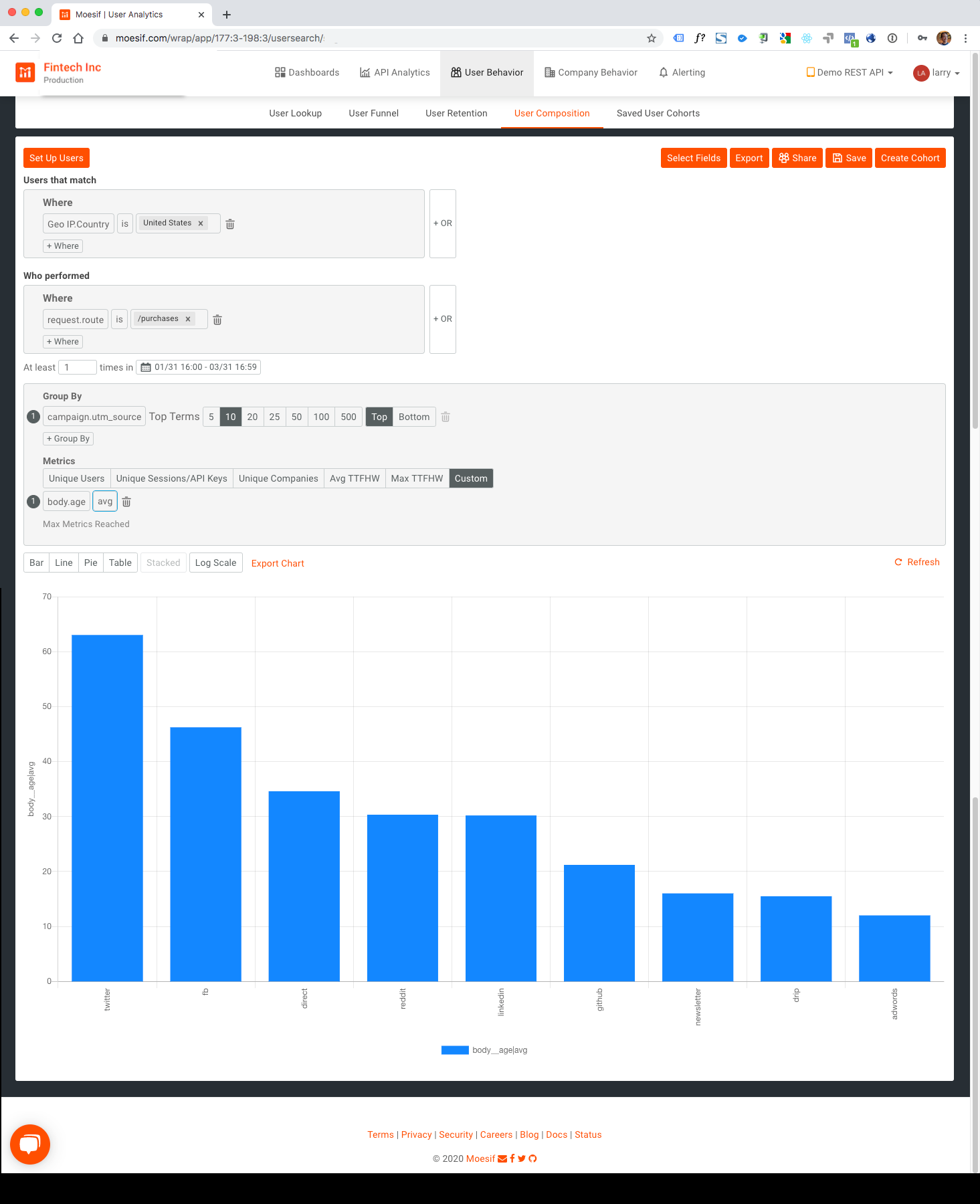Leveraging User Behavioral Analytics for API Analytics Platforms
Behavioral analytics reveals the actions users take within your product. From the beginning, Moesif organizes raw event data, specific API calls, into a timeline of each user’s behavior, or journey. The most well-known example of which is our funnel view for tracking new user conversion: signups > first API call > first working app.
We’ve now augmented our user and company filtering capabilities so you can go beyond typical analyses by customer demographics and other traditional properties to instead focus on understanding how users act and why they perform those actions. Instead, of focusing on single value time-series metrics, user behavior enables you to understand complex user interactions event across multiple API calls or how frequent a customer made those calls.
Concerned about companies in the USA who had a failed API call (400 or 401) last week?
Behavioral Filters
We just completed a pretty big update under User Lookup and Company Lookup. New capabilities include:
- Actions: filtering on companies, or users, not only by demographics, but also by actions - what they did on your API
- Amount: how many actions during a specific time frame
- Combinations: multiple actions can be examined together using AND and OR functions
- Graphing: filtering is not only supported in lookup, but also in composition views
The best way to see the flexibility of behavioral filters is through illustrations by use cases:
Use Case 1: Show me all users who made at least 9 API calls in the last 24 hours

Use Case 2: Show me all users in the USA who had a failed API call in the last quarter

Use Case 3: Graph by marketing campaign channel all USA users, who made a purchase, by age of API

Conclusion
With the release of behavioral filters from Moesif you’re now able to ask sophisticated questions of your data using simple pulldown menus and query boxes:
Want to identify users by campaign source who made a purchase request 3 times in the last 3 days?
With behavioral filters Product Managers can now make more insightful decisions on features, and Marketers can now make the right offers to the right user segments at the right time.
 Get More Insights into How Customers Use Your Platform
14 day free trial. No credit card required.
Learn More
Get More Insights into How Customers Use Your Platform
14 day free trial. No credit card required.
Learn More



